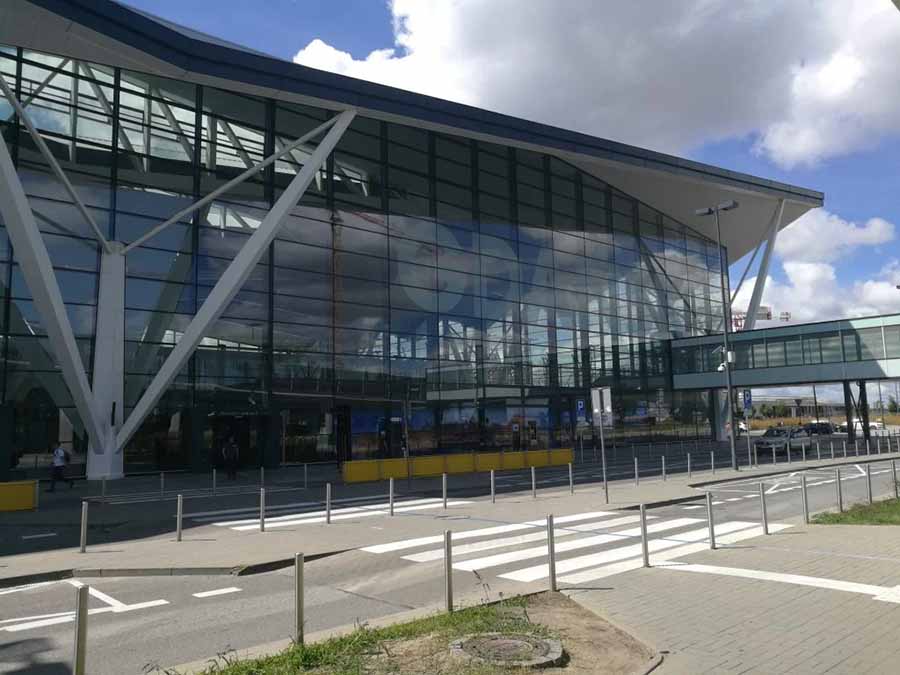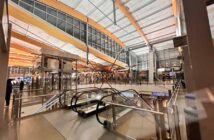
Gdańsk Lech Wałęsa Airport, the primary hub for northern Poland’s Tri-City region, offers a modern and efficient gateway for travellers exploring Gdańsk, Sopot, and Gdynia. Serving over 6.7 million passengers annually, this airport connects to more than 70 European destinations, making it a key entry point for those discovering the Baltic coast. Its compact design and thoughtful amenities ensure a pleasant experience for both leisure and business travellers.
The passenger experience at Gdańsk Airport is designed for convenience. The single main terminal, T2, handles all flights, with the older T1 used sparingly for non-Schengen routes. Clear signage and a streamlined layout make navigation straightforward, from check-in to boarding. With 40 check-in counters and self-service kiosks, the process is generally quick, though some travellers note slower loading times for self-service machines.
Security checks are thorough, and while queues can form during peak hours, the staff are described as courteous, with assistance readily available for passengers with reduced mobility through services like Ferier’s Assisted Travel. The absence of air-bridges means passengers may walk to the aircraft or use a short shuttle bus, adding a practical touch to the journey.
Located just 12 kilometres northwest of Gdańsk’s city centre, the airport is easily accessible. The Pomorska Kolej Metropolitalna train connects directly from T2 to Gdańsk Główny in about 30 minutes for roughly 6.50 PLN, though a change at Gdańsk Wrzeszcz may be required. Buses, including lines 110, 210, and the night line N3, offer affordable options at 3.20–4.20 PLN, taking 40 minutes to reach the city.
Taxis, stationed outside arrivals, cost 60–80 PLN to the centre, while ride-sharing services like Uber and Bolt provide competitive fares of 50–70 PLN. Car rental desks, including Budget and Hertz, are located opposite baggage claim, and pre-booking is advised to avoid delays. Public transport runs frequently, but services taper off after 10 pm so late arrivals may prefer taxis or pre-arranged transfers.
The airport’s layout is modern and functional, with T2 expanded in 2022 by a western pier, adding 16,000 square metres of space. This includes nine baggage claim belts, six passport control points for non-Schengen arrivals, and 18 gates, some serviced by bus. The terminal’s modular design allows for flexible use of Schengen and non-Schengen areas, with digital information boards providing clear flight updates. While seating areas can feel busy during peak times, the terminal remains clean and well-lit, with LED technology enhancing runway and taxiway visibility for pilots.
Delays at Gdańsk Airport are relatively uncommon, with 88% of flights arriving on time, though minor delays averaging 17.8 minutes can occur, particularly during summer peaks in July and August. Weather conditions, such as fog or strong Baltic winds, are the primary causes of disruptions, as the airport’s 2,800-metre runway relies on advanced ILS CAT IIIb systems to manage low-visibility landings. Passengers are advised to arrive two hours early for domestic flights and three for international to account for busier periods or unexpected security queues.
Dining and retail options cater to a range of preferences. Eateries like Bread & Co. offer fresh pastries and breakfast items, while So! Coffee provides sandwiches and teas. A McDonald’s serves familiar fast food, and 1-Minute mini-markets stock snacks and drinks, with some outlets open from 4 am. to 2 am. Duty-free shops, including Aelia, are complemented by souvenir and fashion stores like Victoria’s Secret, though the retail selection is modest compared to larger hubs. Most shops operate from 4 am. to 10 pm with limited 24-hour options.
Facilities enhance the traveller’s comfort. Free Wi-Fi via the @GDNAirport_hotspot network is available for 20 minutes or unlimited with email login, though connectivity can be inconsistent. Charging stations are scattered throughout, and family-friendly amenities include baby-changing areas and a children’s play zone. The VIP lounge, accessible for a fee, offers refreshments and a quiet space, while a chapel hosts Sunday mass, and a post office operates weekdays. Smoking areas are designated near Gates 4 and 21/22, and a sightseeing terrace provides views of the apron. Accessibility is a priority, with ramps, elevators, and pre-bookable assistance for those with mobility needs.
For connecting flights, Gdańsk serves as a hub for low-cost carriers like Ryanair and Wizz Air, with routes to cities like London, Oslo, and Tirana. However, there’s no dedicated airside transfer option, so passengers on non-connected flights must pass through the main hall and security, requiring at least a two-hour layover to ensure smooth transitions. Weather-related delays or crowded security checks can impact tight connections, so travellers should plan conservatively.
Ryanair
Ryanair operates flights to Dublin on Tuesdays, Thursdays, Fridays, and Sundays from the main terminal (T2), with check-in desks typically in the check-in area (desks 20–40). Passengers should check airport screens for exact assignments.
Flights to Ireland (Dublin) typically depart from non-Schengen (gates 1–15). Specific gates are confirmed on departure boards.



